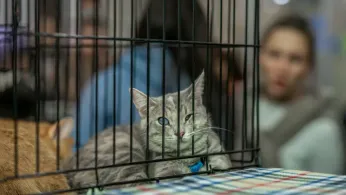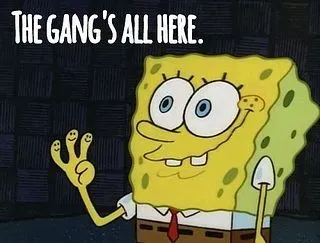
Oct 16
U.S. Cat Adoption Trends Shift as Shelters Face Ongoing Capacity Challenges in 2025
READ TIME: 3 MIN.
Shelter Intake and Outcomes: A National Snapshot
In the first six months of 2025, approximately 2.8 million cats and dogs entered animal shelters and rescues across the United States, according to the most recent data from Shelter Animals Count . This represents a 4% decline from the same period in 2024, but the decrease has not alleviated the strain on shelters, many of which continue to operate at or above capacity . While intake numbers for both cats and dogs have dipped slightly, the summer months—traditionally a peak period for kitten intake—present ongoing challenges for resources, staffing, and space .
Cat adoptions have remained steady compared to last year, but the age demographics of adopted cats are shifting. Juvenile cat adoptions increased by 6%, while adoptions of adult and senior cats each fell by 7% . This trend suggests that shelters and potential adopters may be prioritizing younger animals, leaving older cats—who often face longer shelter stays—at greater risk.
The Role of Foster-Based Rescues and Community Networks
Foster-based rescues now account for the highest proportion of cat and dog adoptions, at 30%, outpacing government shelters (27%), private shelters (23%), and shelters with municipal contracts (20%) . This shift highlights the growing importance of community-based networks in animal welfare, a model that has been embraced by many LGBTQ+ organizations and individuals.
Historically, LGBTQ+ communities have been active in animal rescue and advocacy, with many LGBTQ+ individuals and families choosing to adopt pets from shelters or rescues. This aligns with broader national trends: 31% of cats in U.S. households originate from shelters or humane societies, and 40% of cat owners report adopting from shelters or rescues, according to the ASPCA . Informal networks—friends, family, and community groups—also play a significant role, accounting for 28% of cat acquisitions . These pathways are especially relevant in LGBTQ+ communities, where word-of-mouth and social media often facilitate pet placements outside traditional shelter systems.
Challenges and Opportunities in Animal Welfare
Despite the resilience of the adoption system, shelters continue to face significant challenges. Space constraints, staffing shortages, and limited resources are persistent issues, even as intake numbers decline modestly . The summer “kitten season” exacerbates these pressures, as shelters brace for an influx of young cats needing care and placement.
The decline in adoptions of adult and senior cats is particularly concerning, as these animals often require specialized care and may have longer stays in shelters. Advocates emphasize the importance of inclusive adoption messaging that highlights the rewards of adopting older pets, including their often calmer temperaments and established personalities. Such campaigns could resonate strongly within LGBTQ+ communities, where inclusivity and care for vulnerable populations are central values.
LGBTQ+ Perspectives on Cat Adoption and Animal Welfare
LGBTQ+ individuals and families have long been recognized as key stakeholders in pet adoption and animal welfare. Many LGBTQ+ people choose pet companionship as part of building chosen families, and pets often play a vital role in mental health and community connection. The affinity between LGBTQ+ communities and animal rescue is reflected in the prominence of LGBTQ+-led or -affiliated foster networks, which leverage social media and community events to promote adoption and support for shelter animals.
Moreover, the emphasis on foster-based rescue aligns with LGBTQ+ community values of mutual aid and collective care. Foster programs not only save lives but also create opportunities for LGBTQ+ people to engage in meaningful, community-centered activism. By opening their homes to foster animals, LGBTQ+ individuals can directly address shelter overcrowding and provide temporary care for cats in need—a form of advocacy that is both practical and deeply personal.
Looking Ahead: The Future of Cat Adoption in the U.S.
As the animal welfare landscape evolves, the role of community networks—including those within the LGBTQ+ community—will likely become even more critical. Shelter Animals Count forecasts that community intakes will remain on a similar trajectory through the rest of 2025, meaning that capacity challenges are unlikely to ease without significant intervention . Innovative solutions, such as expanded foster programs, targeted adoption campaigns for older cats, and partnerships with LGBTQ+ organizations, could help address these challenges.
The data also underscore the importance of inclusive, affirming messaging in adoption outreach. By highlighting the diversity of adopters—including LGBTQ+ individuals, couples, and families—shelters and rescues can broaden their appeal and connect with communities that are already predisposed to support animal welfare.
Conclusion
The first half of 2025 has brought both progress and persistent challenges for U.S. animal shelters, with cat adoptions holding steady but age-based disparities emerging as a key concern . Foster-based rescues are leading the way in adoptions, a trend that resonates with the values and practices of many LGBTQ+ communities. As shelters look to the future, collaboration with LGBTQ+ networks and a commitment to inclusive, community-centered solutions will be essential to ensuring that every cat—regardless of age—finds a loving home.






